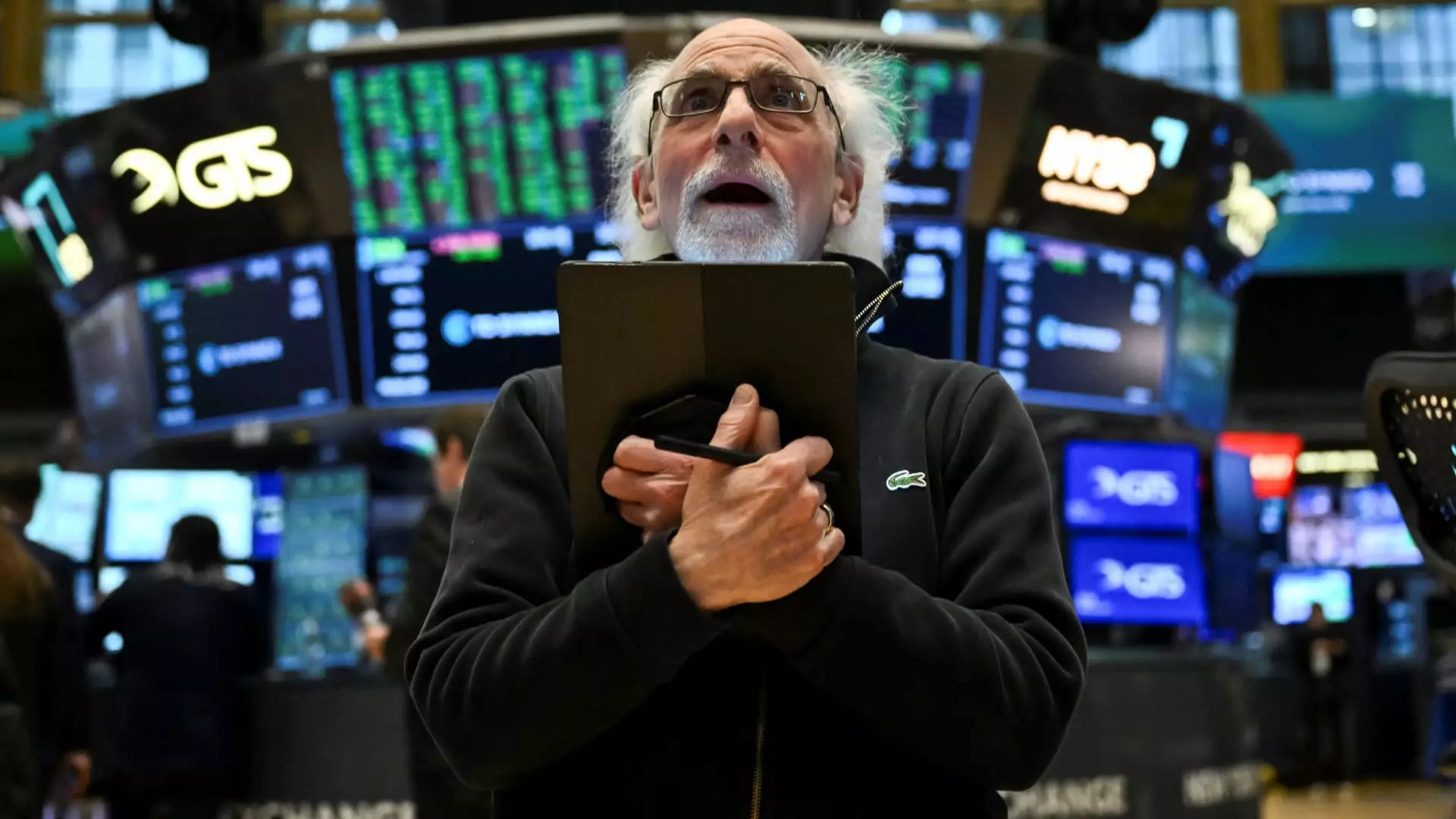In a dramatic twist befitting a financial thriller, hedge funds found themselves in a precarious situation as stock prices skyrocketed on a surprise tariff pause announced by President Donald Trump. This unforeseen rally not only caught traders off guard but also triggered a historical shift — a short squeeze of epic proportions. The events of that day, often described as chaotic and frenetic, serve as a stark reminder of the delicate equilibrium that defines the stock market. The moment of clarity for many traders came amidst an unprecedented wave of buying pressure as hedge funds scrambled to close out their short positions, fearing catastrophic losses.
The stark contrast between the actions of hedge funds, who had bet heavily against the market, and the bullish movements of long-only funds reveals a marketplace fraught with tension. The episode serves as a critical reminder of how sentiment and positioning can shape the outcomes of the financial landscape. Financial professionals, like Jeff Kilburg of KKM Financial, aptly pointed out how tight liquidity constrains market movements, creating a near-chaotic environment where traders are forced to respond with breathtaking speed.
An Insatiable Appetite for Short Selling
As we delve deeper, it’s worth noting that the urge to short-sell in the current market climate has not waned significantly. In fact, prior to the dramatic event, short positioning had reached dizzying heights, nearly double what we witnessed during the pandemic’s first quarter. This obsession with short selling reveals a broader pessimism that permeates Wall Street, illustrating the anxiety felt by investors grappling with ongoing inflation and geopolitical instability. Essentially, hedge funds betting against companies hoped to capitalize on a potential decline, but their overconfidence left them vulnerable when the market unexpectedly rallied.
Not only did the closing of these short positions propel the S&P 500 to its most significant gain since World War II, but it also illuminated a growing disconnection between market sentiment and underlying economic conditions. The fact that such a monumental shift could transpire based on a single news event reflects an alarming fragility. One has to wonder: are markets being manipulated by sentiment, or are they ultimately mirroring an inherent instability that could result in another devastating downturn?
The Role of Liquidity and Speculation
An equally intriguing element to this market turmoil is the role of liquidity. The thinness of the market, described as historical by analysts, exacerbated the volatility, making it easy for price moves to spiral out of control. With trading volumes reaching record highs, this phenomenon raises the question about the sustainability of such frenzied activity. While the numbers—30 billion shares traded in a single day—sound impressive, they almost mirror a speculative bubble waiting to burst.
Traders will always be in pursuit of profits, but that pursuit risks decoupling from the foundations of sound financial principles. The move to liquidate short positions may have appeared prudent in the moment, but it begs further inquiry into the long-term ramifications of such hastily made decisions. Are we witnessing a genuine market correction, or just a fleeting panicked response to fleeting news? It’s vital to consider whether investors are chasing ever-elusive gains or simply caught in the relentless grip of market whims.
Real Buyers Amidst the Frenzy
Despite the cloud of uncertainty, the emergence of long-only funds purchasing tech stocks in droves cannot be ignored. However, these acquisitions appear almost overshadowed by the chorus of short covering as hedge funds frantically rushed to reposition. The favor being shown toward tech strengthens the argument for a shifting market paradigm, one driven not just by speculation but also by genuine optimism in certain sectors. But the persistent overhanging short interest casts a long shadow, waiting for another opportunity to strike should the market take a downward turn.
The volatility we’ve witnessed raises critical questions about the integrity of our stock markets. Is this a sustainable recovery, or merely a collection of speculative froth that could easily deflate? The upcoming months will reveal the extent to which the ecosystem has become more resilient or precarious based on what unfolds from capital flow and ongoing economic challenges. As skepticism reigns, one cannot help but reflect on the precarious nature of today’s financial landscape, awaiting the outcome of what feels like an unfolding drama with profound repercussions yet to come.

